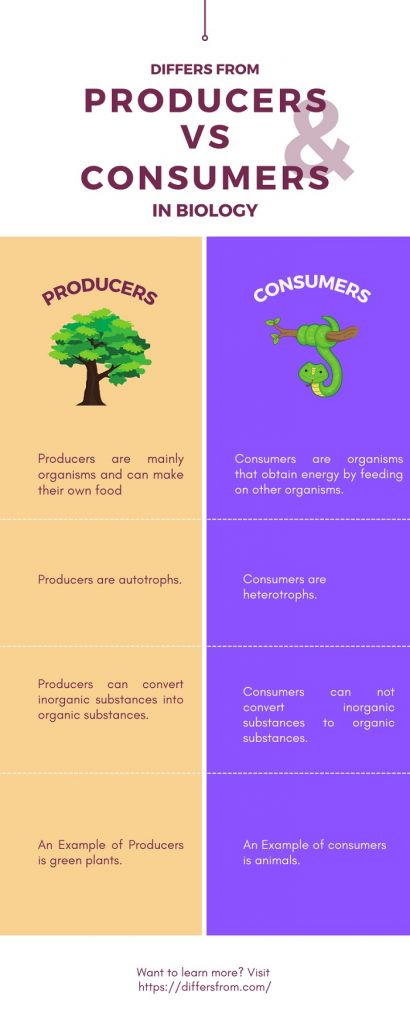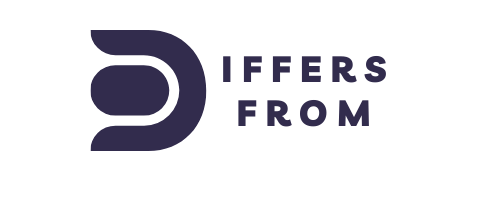You may have heard the word ‘consumer’ in everyday life, but what does it mean? Chances are good that you think of shoppers as consumers; people who buy goods. Producers might come to mind as factories and people who make the goods.
However, when we talk about the difference between producers and consumers in biology the specific details are slightly different – yet still similar enough to be comparable!
In biology, we often use it to refer to organisms that consume food. We are called consumers because of the natural cycle where producers make our food and then we eat it. There is a lot more nuanced when you look into what each type of organism entails; let’s take a closer look at them both!
What is a Producer?
Producers are organisms that make their own food, and they can be autotrophs. They get energy from chemicals or the sun with the help of water to convert it into a type of sugar called glucose which we call “food.” The most common example is plants such as trees found on land but also underwater if there’s enough sunlight.
Example of producers in Biology:
All the green plants are examples of producers. Green plants can produce their own food by taking sunlight and using their energy. Trees, such as the mighty oak, and the grand American Beech, are examples of primary producers.
What is Consumer?
Consumers are organisms that need to eat (i.e. consume) food to obtain their energy. Consumers are called heterotrophs, which means that they must eat something else as food.
In many ways, we are all consumers. We may not have to eat other organisms as animals do but our bodies still require energy and living things give that to us. Not only can you find a great variety of heterotrophs in nature from birds, cats, and insects; these life forms also exist inside of humans!
When it comes down to consuming food for sustenance or just having a snack every now and then there is no real difference between an animal consumer (like a bird) or a human as they both need their body’s basic needs met: power (i.e., energy).
Examples of consumers in Biology:
- Primary consumer: Eat producers for energy, for example, cows.
- Secondary consumer: Eat primary consumers for energy, for example, snakes.
- Tertiary consumer:- Eat secondary consumers for energy, for example eagle
Producers vs Consumers in Biology
| Producers | Consumers |
| Producers are mainly organisms and can make their own food | Consumers are organisms that obtain energy by feeding on other organisms. |
| A producer is the first trophic level meaning they can make their own foods from energy. | A consumer eats producers. |
| An Example of Producers is green plants. | An Example of consumers is animals. |
| Producers are autotrophs. | Consumers are heterotrophs. |
| Producers can convert inorganic substances into organic substances. | Consumers can not convert inorganic substances to organic substances. |
| Producers play a primary role in the food chain. | Consumers play a secondary role in the food chain. |
| Producers are green photosynthetic plants. | Consumers are not photosynthetic |
| They are also known as “converters” or “transducers | They are also known as “obtainers”. |
Difference between Producers and Consumers with Infographic

Relationship between Producers and Consumers in the ecosystem:
The cycle of life, called an ecosystem, is a system in which all organisms depend on one another. Without producers, there would be no food for the consumers or decomposers; without them, they could not survive and continue to provide oxygenated air that we need so much! There are always three levels involved with this process: Consumers, Producers, and Decomposers–it’s only possible because each organism has its own role as part of an interconnected ecosystem.

